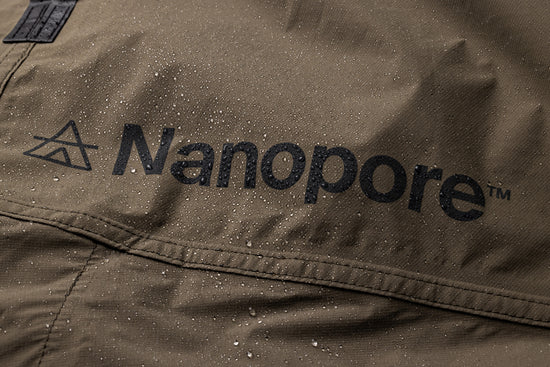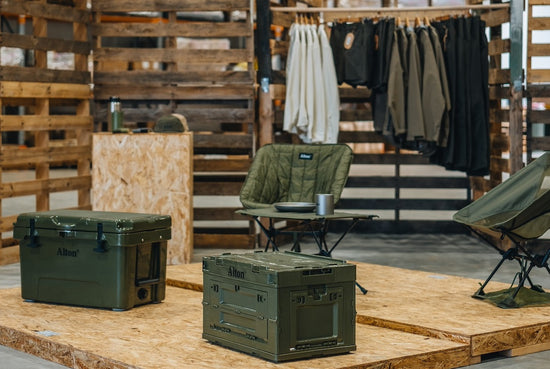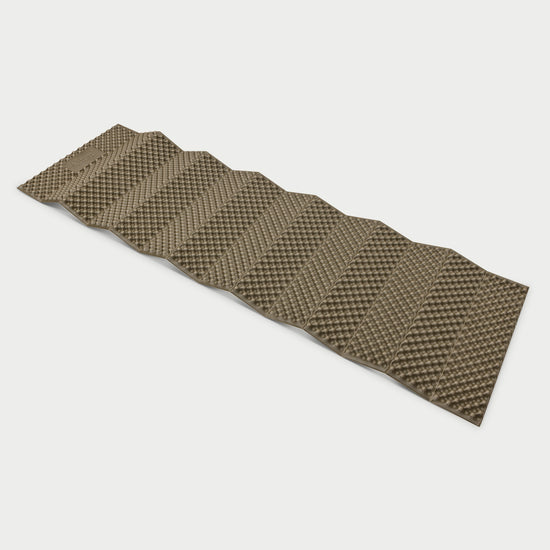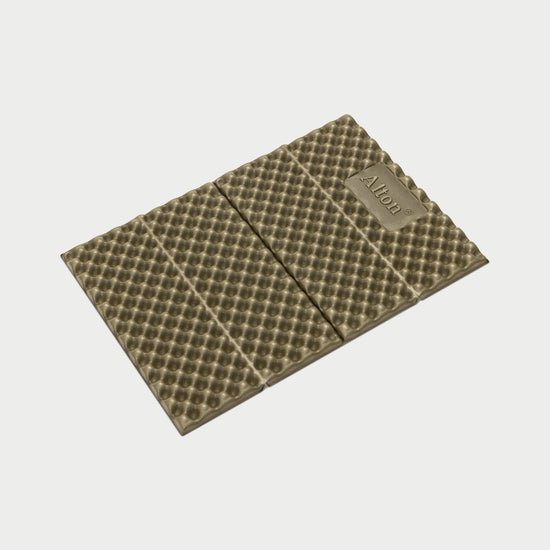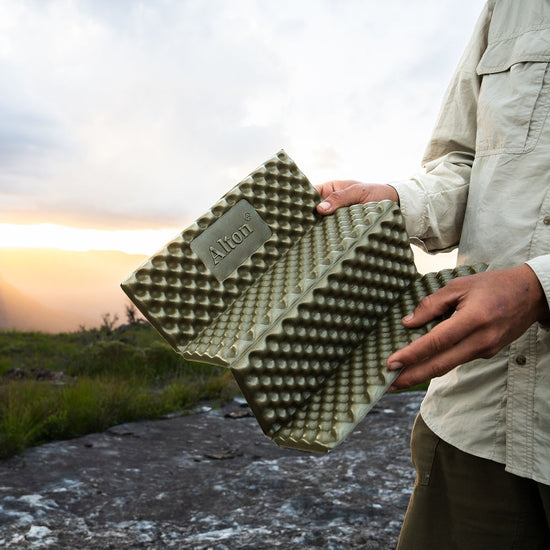Closed-cell foam pads are like the espresso shot of the camping world. Simple, strong, and definitely not for everyone.
And like espresso shots, a lot of people prefer to combine them with other ingredients to get a delicious milky coffee…
Or in the case of CCF mats, the perfect sleep system.
So if you’re the type of person who can’t sleep unless you have a soft, supportive mattress beneath you… then you’re probably not going to enjoy sleeping on a closed-cell foam mat alone – but it still might be a good addition to your kit, for other reasons.
And what if you’re looking for a seriously reliable ultralight mat and are willing to sacrifice a bit of comfort in order to achieve that?
Well, in that case then you might find that you are perfectly comfortable (pun intended) using a closed-cell foam sleeping mat by itself.
But before you trade in your inflatable sleeping mat for a thin sheet of foam, it’s worth knowing what you’re getting yourself into.
That’s why in today’s blog, we’ll give you a clear, no BS overview of the pros, cons, and quirks of closed-cell foam mats. We’ll be real with you about how comfortable they are, explain all the possible uses and why some hikers swear by them – and other hikers swear at them.
What Is A Closed-Cell Foam Mat?
A closed-cell foam sleeping mat, also sometimes called a closed-cell foam pad or CCF mat, is a sleeping mat for camping made from a single sheet of closed-cell foam.
The foam is typically made from polyethylene (XLPE or IXPE) or EVA. Whichever acronym you end up with, the material is pretty much the same, containing thousands of tiny sealed air pockets – a.k.a closed cells – that are able to trap warm air and prevent heat loss into the ground.
These tiny air pockets make closed-cell foam an effective thermal insulator, which is why most CCF pads have a surprisingly high R-value rating (usually between R1.2 and R2.5) compared to their thickness and weight.

What’s The Difference Between Flat vs Moulded Closed Cell Foam Pads?
Closed-cell foam pads come in two main styles: the flat ones that look like yoga mats, and the moulded ‘egg-carton’ ones. Both do the same job, but closed-cell foam pads with moulded ‘dimples’ or ‘nodes’ are known for being more comfortable and lighter.
The reason for this is fairly simple. Imagine you have a flat sheet of closed cell foam that’s 1cm thick. If you mould that foam to have dimples, the width will now be more like 1.8cm measuring from the lowest to the highest points on the nodes. The foam itself is still 1cm thick, but the total span has increased. Got it? Good.
That means that, if you’re comparing two CCF mats that are made from 1cm thick foam, the one that’s dimpled will be noticeably more comfortable – without altering the weight or insulation performance.
And what about closed-cell foam mats that fold up, accordion style, versus those that roll up? The difference is pretty minor, so what you prefer is a matter of personal preference, but folding closed-cell foam mats are slightly easier to set up and pack away, and can pack down a bit smaller than CCF mats that need to be rolled up.
 What are the Pros & Cons of Closed-Cell Foam Mats?
What are the Pros & Cons of Closed-Cell Foam Mats?
Pros of Closed-Cell Foam Mats
1. 100% puncture proof.
You could sleep on cactus spines, gravel, or a field of bindies – your closed-cell foam sleeping pad will never get a puncture. This bombproof reliability makes CCF mats a sound addition for winter camping, alpine trips, and anywhere that a popped pad would be more than a mild inconvenience.
2. Unpack, lay flat, done.
No valves. No inflation. No ‘psssst’ sound in the middle of the night that sends your heart rate through the roof. With a close-cell foam mat, all you need to do is unstrap it, throw it down, and… wait, that’s it. That’s the entire setup.
3. Impressive versatility.
Because CCF pads are so easy to use, you’ll probably find yourself reaching for them a lot more than you might expect. Sit pad? Check. Wind break for cooking? Check. Pack frame, pillow, or emergency splint? Check, check and check! The real question is, what can’t you use a closed-cell foam pad for?
4. Boost Insulation.
One of the main reasons people invest in a closed-cell foam mat is to increase the warmth of their inflatable sleeping mat. By layering a CCF pad underneath your inflatable mat, you get the combined R-value of both. For example, if you use the Closed-Cell Foam Pad PLUS (R2.5) with the Insulated Sleeping Mat (R4), you’d have a total R-value of 6.5.
5. Budget-friendly.
Closed-cell foam sleeping mats are one of the rare items of camping gear where you get a LOT of value for a relatively small amount of money. They hold up to years of heavy-use without needing repairs or special treatment.
6. Customisable.
Another great point about closed-cell foam pads is that you can customise them. For example, lots of ultralight thru-hikers cut their CCF mats down to be shorter, but we’ve also heard of people combining two CCF mats of different sizes to add more padding under their hips and shoulders. If you are someone who likes customising your gear, then a closed-cell foam mat lets you get creative!
7. Easy to carry.
There’s a few reasons why most people carry their closed-cell foam mats on the outside of their packs. First, CCF mats are really tough, so it doesn’t matter if they get scraped or bumped on the trail. Second, while they’re usually extremely light, they do tend to be a bit bulky, so it’s easier just to whack them on the outside rather than lose precious space inside your pack. And lastly, it just looks sick and lets you show everyone that you’re seriously tough. Just kidding… or are we?
8. Weatherproof.
Closed-cell foam is not absorbent, so if you do happen to get your CCF pad wet, all you’ll need to do is wipe them off with a dry cloth and you’ll be ready to go – or sleep. Either way, they’ll be dry again in a jiffy.
9. Easy to clean and store.
Closed-cell foam sleeping pads are super easy to clean and care for. If your CCF pad does get grubby, a quick rinse with a hose or spray under the shower should do the trick. Let it air dry, then toss it in your closet or under the bed. If only all camping gear was that easy to care for, right?
10. Closed-cell foam pads can be reused and recycled.
If the day comes that your closed-cell foam sleeping mat is no longer functional, you can re-use or recycle the material. Please double check with your local council or waste management facility to make sure they accept CCF.
Cons of Closed-Cell Foam Mats
1. Comfort… or the lack thereof.
We won’t sugar-coat it. Closed-cell foam sleeping mats aren’t famous for their comfort. If you are shopping for a super comfortable, supportive, cushioned camping mattress, you might consider using a CCF mat with another mat – but using it alone may leave you questioning your life choices at 2 a.m.
2. They’re not small.
Closed-cell foam mats are very light, usually well under 500g, but they are a lot bulkier than comparable ultralight inflatable camping mats. That’s why you usually see CCF pads strapped to the outside of the pack.
3. They can be annoying to carry.
Because they’re so bulky, most of us end up carrying our closed-cell foam mats on the outside of our packs. But this can pose its own set of problems. Depending on the terrain, your CCF mat might snag on brush, catch on low-hanging branches, and scrape over stones. You get used to it and learn to adapt, but that doesn’t mean it’s not annoying.
4. Limited warmth (on their own)
Most closed-cell foam pads have an R-value of 2 or less. That’s serviceable for mild to cool conditions year-round, but you will need some additional insulation if the temperature drops closer to freezing. This is why CCF mats are popular for layering – but alone, they’re really not going to cut it for 4 season use.
5. One size fits… some?
Over the last decade, inflatable air mats for camping have come a long way. They’re in all shapes and sizes, widths and thicknesses… Closed-cell foam mats, on the other hand, come in a fairly limited variety of sizes. Usually 185cm x 51cm, as a matter of fact.
6. The foam can compress over time.
Closed-cell foam mats may be puncture proof, but they are susceptible to compression over time. If you use your CCF sleeping mat a lot, you may notice that the foam begins to flatten slightly and lose some of its bounce.
7. They get scuffed up quickly.
Because they’re usually carried on the outside of your pack, closed-cell foam pads often get a few scraps and scuffs after a long hike. Surface damage shouldn’t affect the performance of your CCF Mat, but we have opted to include an abrasion resistant carry bag with our CCF mats to reduce wear and tear during transport.
8. The adjustment period.
If you’re new to sleeping on a closed-cell foam mat, the first night might not be the most enjoyable. In our experience, it takes a couple of nights to get used to the sensation of sleeping on a CCF mat, but some people may find they need longer. This adjustment period isn’t fun, but for most people, it does get better. Or, you might try it once and decide that you’re never subjecting yourself to that again.
When to Consider Using a Closed-Cell Foam Mat?
Closed-cell foam mats aren’t for everyone or every situation – and that’s fine. They’re brilliant in certain situations and completely wrong for others. The trick is knowing when and where you’ll get the best results.
Here’s the situations where closed-cell foam mats excel:
-
When the terrain is tough and so are you. Alpine scree, cactus-covered deserts, dense forests littered with sticks. These are the places where inflatable air mats go to die, as one Reddit user so aptly said. In certain environments, CCF pads really are the best option.
-
When you want speed and simplicity. Inflatable air mats might be comfortable, but they do take a surprising amount of time and effort to set up and pack down every day. Closed-cell foam mats, on the other hand, literally take seconds to deploy. In certain situations, such as tactical activities or fast-packing trips where you cover serious distances each day, that can be a huge advantage.
-
When your current sleeping mat isn’t quite warm enough. If your inflatable air mat isn’t warm enough to handle cold, alpine conditions, don’t drop hundreds of dollars on replacing it – just get a closed-cell foam mat to use with it, instead. If you layer it beneath your other mat, you’ll increase the insulation up to the combined R-value of both.
-
When you want a multipurpose bit of gear to enhance comfort. Closed-cell foam mats aren’t just for hardcore hikers – they also appeal to campers who value comfort, and are willing to carry a little extra weight because of that. When you’re not using them beneath your sleeping mat, they work as a seat, or a clean spot to chuck your gear while you set up camp, or a pillow… or a windbreak for cooking, or a makeshift pack frame… All that to say, CCF mats really do earn their keep.

Case Closed…on Closed-Cell Foam Mats.
A closed-cell foam pad is a low-investment, high-reward item that adds a lot of flexibility to your sleep system. There’s nothing fancy about them, but they get the job done – and do it well. And that’s why we absolutely love them.



